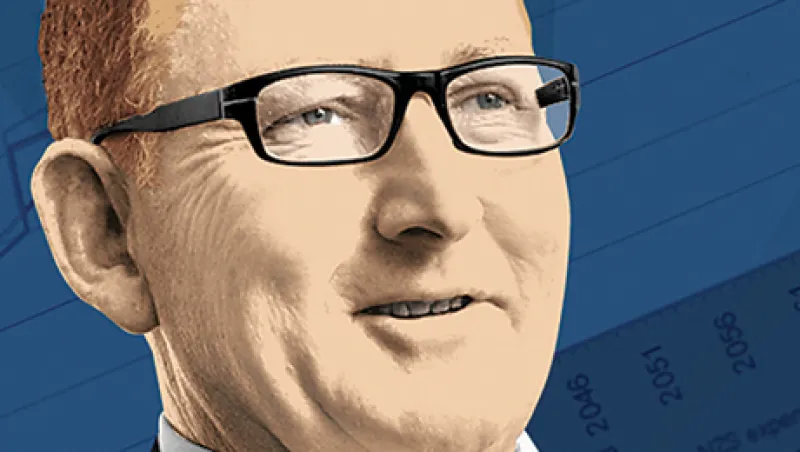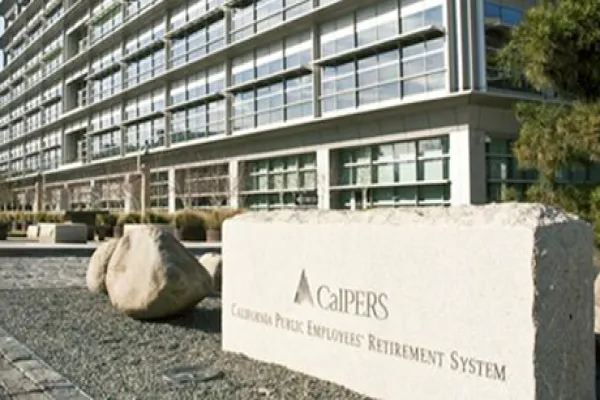Adrian Orr feels vindicated. In February 2007 the energetic, outspoken economist took over as CEO of the Guardians of New Zealand Superannuation, the investment group that manages the country’s NZ$23 billion ($18.9 billion) sovereign wealth fund. His remit: Transform the fund from a traditional asset allocator into an agile and opportunistic investor.
Orr had been on the job only a few months when the subprime mortgage crisis erupted. Far from giving him pause, though, the crisis spurred him to accelerate the strategic shift. Adopting a total-portfolio approach, the CEO and his team created a passive reference portfolio to serve as an internal benchmark. They seek to beat that benchmark by finding investments with superior risk-adjusted returns, using tactics such as strategic tilting, or adjusting exposure to asset classes that are over- or undervalued in the expectation that they’ll revert to the mean.
The recalibrated strategy took a few years to perfect, Orr admits, but the results are starting to show. The New Zealand Superannuation Fund had its best results ever in the fiscal year ended June 30, gaining 25.8 percent. Since inception in September 2003, it has returned an annualized 8.8 percent, beating its reference portfolio by 1.14 percentage points, worth a tidy NZ$2 billion. Orr, 50, who previously served as deputy governor of the Reserve Bank of New Zealand, recently spoke to London Bureau Chief Loch Adamson.
How did the crisis impact the NZSF’s strategic approach?
If anything, it gave us the courage to move faster in implementing several key changes to our strategy. What we have been doing here is a very deliberate shift from what would be considered a bucket-filling, asset allocation–type framework — where we have allocated a certain amount to different strategies — toward a reference portfolio framework. Outside of the reference portfolio, we pursue an opportunistic, active approach to investing. Although it might not sound like much, the shift represents a fundamental change in the way we have set ourselves up, how we resource ourselves and go about making investment decisions.
Are there advantages to being a sovereign wealth fund investor?
We do tend to sit back and think, “What are our endowments as a fund?” It’s not just relevant to sovereign wealth funds; every investment fund should be thinking this way. We do have certain advantages: our liquidity, our location, our governance structure, our operational independence and even our ownership structure as part of a government-related organization. We then think about how to set up a series of investment strategies that best exploit our situation. For example, we’ve had a five-year strategy to identify who our peer investors are, in terms of their strategic endowments and how they make decisions internally — so that we can work more closely with those funds which share similar governance and decision-making capabilities.
What qualities define a good investment opportunity?
We will invest only when we think we’ve identified a true price-value gap; i.e., a long-term active return. At that point we are quite happy to be pretty heavily concentrated in the position, but we won’t have a fixed allocation to it. Our approach makes us a difficult customer to deal with as far as our external advisers are concerned. In the traditional private equity model, for example, you buy a cross-section of every vintage and hope like hell that between skill and luck it gives you a superior return. We’ve moved right away from that framework. We will only invest in private equity when we see it as the most cost-effective access point to a particular market opportunity.
How much of the fund is managed internally?
I always struggle to answer that question. All of our investment decisions are made internally, by the investment committee. In capital terms, about one third of our net asset value is actively managed by external managers. But if you look at the fund on a risk budget framework, by far the bulk of the active risk is managed internally, either through the selection of the reference portfolio or through our strategic-tilting budget and our other active strategies, including direct investment, infrastructure, timber and rural direct investments.
What were the drivers behind the NZSF’s recent performance?
Markets have been so far from fair value; we’ve really been able to exploit that disparity. Looking ahead, our expected returns are far more normalized. The U.S. market is looking very close to being fully priced; there is still some juice left in European markets. But relative to the past five years, we’ve seen a massive correction of price back toward some sense of fair value in the equity markets. The bond markets, however, present a much bigger question mark.






